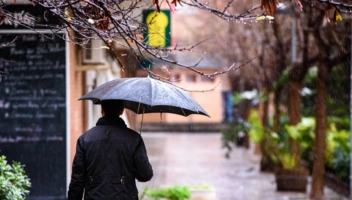Preparing a Community Fire Prevention Plan

Wildfires consume millions of acres every year, threatening countless homes and property. In 2022 alone, humans were responsible for nearly 90 percent of wildfires, which equates to 61,429 wildfires that could have been prevented. The first step in fire prevention is preparing a community wildfire protection plan (CWPP).
A community wildfire protection plan sets the foundation for keeping your neighborhood safe by reducing the risk of a wildfire spreading throughout the community. Bringing together residents, local government agencies, and emergency personnel, a CWPP outlines the goals, plans, and actions the community can take to reduce its risk of wildfire destruction.
How do you go about preparing a CWPP? We’ve created this guide to help you develop a plan for your community.
In this article:
- Environmental Risk Assessment
- Community Steps for Fire Prevention
- Stakeholder Risk Assessment
- Final Thoughts
- Frequently Asked Questions
Environmental Risk Assessment

Image by Egor Vikhrev via Unsplash
As a result of the Healthy Forest Restoration Act of 2003, community wildfire protection plans became part of legislation that encouraged communities to take action to reduce the risk of wildfires.
CWPPs assess the community’s risk using topographical maps to identify environmental factors that could increase the risk of wildfire spreading through the community.
Additional research via fuel maps, data demographics, and emergency locations helps communities understand their surroundings and plan and prepare the environment to help prevent wildfires.
Community Steps for Fire Prevention
Some suggestions for mitigating community environmental wildfire risk include:
- Manage hazardous fuel in the area: Reduce flammable material in the community to decrease the possibility of ignition or fuel flow. Thin trees, prune overgrown vegetation and keep plants and flowers well hydrated.
- Reduce the chance of fire ignition: Be aware of potential fire ignition risks, such as the area’s fire danger level and debris-burning laws. Follow fire prevention best practices when using campfires, vehicles, fireworks, and smoking paraphernalia.
- Create a defensible space and harden your home: Residents and homeowners should create a defensible space around the area they live while hardening their homes. Home retrofitting, such as roof replacement, window enhancement, gutter covers (like our award-winning, patented LeafFilter Gutter Protection), and boxed eaves reduce the risk of flying embers spreading a fire further.
- Communicate with others for fire prevention coordination: Use early warning systems to communicate with close friends and family or receive updates from emergency personnel as a wildfire unfolds.
Having LeafFilter Gutter Guards professionally installed is one way to harden your home. Our patented technology prevents flammable debris from forming clogs inside your gutters, meaning there’s no debris buildup for flying embers to ignite. Not only does this protect your home, but it can also help to slow the spread of fire.
Believe it or not, strong gutters are your home's first line of defense against fires! LeafFilter's flame-resistant uPVC frame withstands heat, keeping you safe. Discover more on house fire prevention here: https://t.co/ny2wmR2Jx5 🔥 #WildFires #HardenYourHome #SafetyFirst pic.twitter.com/n22wDfjdTQ
— LeafFilter Gutter Protection (@LeafFilter) September 18, 2023
Stakeholder Risk Assessment
Stakeholders in the community are anyone with an investment in the neighborhood, whether personal, financial, or otherwise. This includes residents, local officials, business owners, employees, and emergency personnel. A CWPP takes into account all valuable assets within the community that may be at risk from a wildfire.
Steps stakeholders can take in order to reduce the risk of fire in the community include:
- Fireproof and harden your home or business: Individual home and business owners can help prevent wildfires by protecting their own property and structures, from installing smoke alarms and keeping fire extinguishers on hand, to replacing the roof and windows and covering gutters with a proven gutter protection system like LeafFilter, which keeps even the smallest debris—including pollen and shingle grit—from entering your gutters, allowing only water to flow through.
- Create a defensible space around your property: In conjunction with fireproofing inside your home and hardening the outside, build an ember-resistant zone up to 100 feet to reduce the risk of fire spreading to your home or business.
- Adhere to your Community’s Wildfire Protection Plan: Follow the guidelines set forth by your Community Wildfire Protection Plan. It will contain pertinent information relative to your personal surroundings.
- Prepare and plan a safe evacuation: Put together an action plan for evacuating should it become necessary to leave your home or business behind. Pre-pack emergency bags for all individuals in the household and ensure first-aid kits are ready to go. Keep your documented evacuation plan and tools easily accessible.
Final Thoughts

While wildfires occur naturally in many parts of the US, we can all do our part to reduce the risk. Having LeafFilter gutter guards professionally installed is an effective way to prevent flying embers from igniting built-up debris inside your gutters.
But that’s not all. By preventing anything other than water from entering your gutters, our proven gutter protection system prevents clogs from forming inside your gutters, protecting your home from the potentially devastating water damage that clogged gutters can cause.
Add to that a lifetime, transferable warranty, and your next course of action becomes clear: call us today at 1-800-290-6106 to learn more about how LeafFilter gutter guards can help to keep your home—and your neighborhood—safe.
Frequently Asked Questions
How do you write a Community Wildfire Protection Plan?
A community wildfire protection plan, or CWPP, requires documenting a land risk assessment, potential community health problems, stakeholder asset concerns, and an action plan. The U.S. Fire Administration conveniently provides a form-fillable template to guide users through the process of writing a CWPP.
What is the purpose of a CWPP?
The purpose of a CWPP is to help communities work together to minimize the risk of wildfires destroying neighborhood homes and structures.
How can communities prepare for a wildfire?
Communities can prepare for a wildfire through individual actions and group planning. Combining the efforts of creating defensible spaces, fireproofing and hardening homes, and collaborating with the community stakeholders, the community reduces its risk of wildfire spreading.


